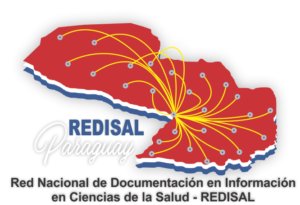Infección por dengue perinatal en un centro hospitalario del departamento central de Paraguay
Perinatal dengue infection in a hospital in the central province of Paraguay
Rev. Nac. (Itauguá); 6 (2), 2014
Año de publicación: 2014
RESUMEN Introducción:
La infección por dengue durante el embarazo puede poner en peligro la vida del binomio madre-hijo; es importante saber reconocerla.Objetivos:
Identificar las características clínico-epidemiológicas de las embarazadas con diagnóstico (dx) de dengue en el momento del nacimiento. Describir las características clínicas y evolución de sus recién nacidos (RN).Materiales y Métodos:
Serie de casos de RN de madres con dengue en el nacimiento y puerperio, durante las epidemias de dicha enfermedad en el país en los años 2012 y 2013, internados en el Servicio de Neonatología del H. Nacional. El Dx de dengue en la embarazada y el RN se consideró teniendo en cuenta la epidemiología, y/o con confirmación serológica (Viremia positiva determinada por PCR, y/o IgM positivo para dengue por Elisa de captura).Resultados:
Se incluyeron 12 embarazadas y sus 13 RN, con un par de gemelares. Las madres provenían del Dpto. central y ciudades vecinas; tenían una edad de 18 años (15-34). Fueron sintomáticas 10(83,3%). 7(58,3%) de ellas requirieron internación antes del nacimiento. Los síntomas se presentaron antes del nacimiento en 6, el día del nacimiento en 1, después del nacimiento en 1, y en 2 se desconocía la duración de síntomas. Se sometieron a cesárea 8(66,6%); el motivo de la misma se debió a pre-eclampsia, eclampsia en 4(50%), sufrimiento fetal 2, gemelar en pelviana 1, y dengue en 1 caso. 2(16,6%) de las madres fallecieron. De los RN incluídos 8 fueron femeninos y 5 masculinos; se consideró a 9 RN con dx de dengue y 4 sin dengue. La EG media en cada grupo fue 36,6±1,4 y 37±2 sem. respectivamente; el peso de nacimiento de 2431±381,9 y 3076,6±899,1 gr. De 9 RN con dengue, desarrollaron síntomas 7; 1 el día del nacimiento y en 6 después de las 24 hs y <7 días.Los síntomas destacados fueron:
trombocitopenia en 9; disturbios hemodinámicos, ascitis y fiebre en 7; dificultad respiratoria y derrame pleural en 4; distención abdominal en 3; rash cutáneo y edema de párpados en 2; hipoactividad, irritabilidad, hipoglucemia y vómitos en un caso cada uno. 4 RN requirieron transfusión de plaquetas. Todos fueron dados de alta vivos, con una duración de internación de 16±5,9 días.ABSTRACT Introduction:
dengue infection during pregnancy can endanger the life of the mother and child; it is important to recognize it.Objectives:
To identify clinical and epidemiological pregnant woman with diagnosis (dx) of dengue at the time of child birth. To describe the clinical characteristics and outcome of newborns (RN).Material and Methods:
Case series of dengue RN mothers at birth and postpartum, during epidemics of the disease in the country in 2012 and 2013, admitted to the Neonatal Service of the National H.. The Dx of dengue in pregnant and RN considered taking into account the epidemiology, and / or serological confirmation (positive viremia determined by PCR and / or positive for dengue IgM capture Elisa).Results:
12 pregnant and 13 RN were included, with a pair of twins. Mothers came from the Central Department and neighboring cities.; were aged 18 years (15-34). Symptomatic were 10 (83.3%). 7 (58.3%) of them required hospitalization before birth. The symptoms occurred before birth in 6, the day of birth to 1, after birth in 1 and 2 the duration of symptoms was unknown. They underwent cesarean section 8 (66.6%); the reason of it was due to pre-eclampsia, eclampsia in 4 (50%), fetal distress 2 twin breech 1 and dengue in 1 case. 2 (16.6%) of the mothers died. Of the RN included 8 were female and 5 male; was considered to 9 RN with dx of dengue and dengue 4 without. The average EG in each group was 36.6 ± 1.4 and 37 ± 2 sem. respectively; birth weight of 2431 ± 381.9 and 3076.6 ± 899.1 gr. From 9 new born with dengue, 7 developed symptoms; 1 the day of birth and 6 after 24 hours and <7 days. The prominent symptoms were thrombocytopenia in 9; hemodynamic disorders, ascites and fever in 7; shortness of breath and pleural effusion in 4; abdominal distension 3; skin rash and eyelid edema in 2; hypoactivity, irritability, hypoglycemia and vomiting in one case each. 4 new born required transfusion of platelets. All were discharged alive with a duration of hospitalization of 16 ± 5.9 days.
Dengue/complicaciones, Dengue/epidemiología, Complicaciones del Embarazo/epidemiología, Recién Nacido, Trombocitopenia Neonatal Aloinmune, Dengue Grave, Hemodinámica, Ascitis, Derrame Pleural, Síndrome de Dificultad Respiratoria del Recién Nacido, Transmisión Vertical de Enfermedad Infecciosa, Preeclampsia, Eclampsia, Cesárea, Paraguay/epidemiología


